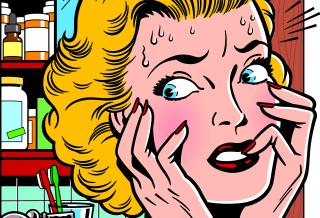Advertisement
In the mid-twentieth century, a lucrative new industry formed. It employed public relations firms, scientists willing to say whatever their employers needed, and representatives able to impress the public with scientific jargon. The new industry’s first clients were tobacco companies, and its product was doubt: doubt that cigarettes caused cancer, that nicotine was addictive, or that secondhand smoke was dangerous.
Tobacco companies used that doubt to produce delay: delayed regulations, fines, and court settlements. Doubt also helped nicotine addicts convince themselves they didn’t need to quit just yet. The companies continued making billions of dollars each year, decades after independent scientists knew that tobacco was killing people.
In business, a success story like that never just dies. It spawns imitators.
So the doubt industry found new clients with harmful products: drugs with damaging side effects, chemicals digging a hole in the ozone layer, and—most lucrative of all—fossil fuels making the Earth’s climate hotter.
In each case, it wasn’t necessary to convince the public that the product was harmless, only that the harm was in doubt, and the cost of change might be high. So it was still too soon to ban or regulate or demand compensation, too soon for the public to change its habits or seek alternatives. Maybe someday, decades hence, after many billions of dollars in further profits, some kind of action might be necessary. But not yet, not while there was still so much doubt.
Whatever the product happened to be, the process of creating doubt about its harm was remarkably similar: cherry-pick the legitimate research for details that could sound doubtful out of context; use money collected from the product’s makers to form apparently independent front groups with public-spirited names (like Citizens for Fire Safety); style the scientists and other representatives hired by such front groups as “independent experts” and then offer them to the media to pair against government or academic scientists in one-on-one debates. Confronted with two apparently equal talking heads—one of whom was selected for media skill rather than scientific expertise—how could the public come to any other conclusion than that no expert consensus had formed, and the science was still not definitive?
The story of the doubt industry has been available for years in books like Doubt Is Their Product by David Michaels (Oxford UP, 2008) and Merchants of Doubt by Naomi Oreskes and Erik M. Conway (Bloomsbury, 2010). Both are excellent works of investigative journalism, but they have circulated mainly among activists. Although well written, they are too detailed and too upsetting to appeal to a mainstream audience. It is far too easy to put either book down and do something less stressful.
Recently, though, this topic has become more accessible in two ways: Merchants of Doubt has become a documentary film directed by Robert Kenner (Sony Pictures Classics, 2014), and Hugo and Nebula winner Paolo Bacigalupi has written a young adult novel, The Doubt Factory (Little, Brown, 2014).
The main character of Bacigalupi’s novel is the teenage daughter of the co-founder of a doubt-producing public relations firm. She is kidnapped by a talented band of teens who have been victimized by her father’s clients’ products. Their goal is not ransom or revenge, but to show her the true nature of her father’s business, in the hope that she will help them acquire and expose his secret files.
The novel raises far-reaching issues of loyalty and privilege: Should the girl side with her family, or with the victims of the injustices that enable her lifestyle? Once she starts digging, her character and intelligence will push her to find the full truth and to do the right thing with it. But—as with so many of us—the biggest hurdle is her desire not to know, and to accept her father’s facile explanations that everything is OK.
In Kenner’s documentary, that desire to be fooled by the doubt industry is expressed by former Republican congressman Bob Inglis, who has taken on the thankless job of carrying the message of climate change to the conservative community.
“The reason that we need the science to be wrong,” Inglis says, “is otherwise, we realize that we need to change. That’s really a hard pill to swallow—that the whole way I’ve created my life is wrong, you’re saying? That I shouldn’t have this house in the suburbs, that I shouldn’t be driving this car … And along come some people with sowing some doubt, and it’s pretty effective, because I’m looking for that answer.”
The film both adds to and subtracts from the book by Oreskes and Conway. It streamlines the narrative by focusing on three main examples: the foundational tobacco story, the tobacco-related story of fire-retardant chemicals, and climate change. It personalizes those stories by letting participants do the telling: victims, defectors from the doubt industry, and the investigative reporters (including Oreskes herself) who exposed the often tangled connections between apparently disinterested “experts” and the profit-makers who funded them. And it anchors its points about deception and obfuscation by repeatedly returning to the film’s central metaphor: magician Jamy Ian Swiss’s artful card tricks and patter about misdirection.
Oreskes’s final appearance in the film ties the introductory segment on tobacco to the final one on climate change, and underlines why this issue needs our attention and activism: time. With tobacco, the scientific/political/legal process eventually worked; the truth came out and was accepted—after fifty years. With climate change, she says, “the problem is that we don’t have fifty years.”
